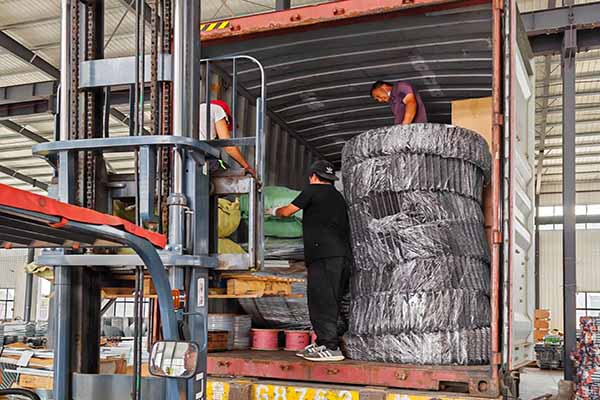Broiler Farming in Cage System: A Comprehensive Guide
Time : 2025-04-19
Broiler farming, especially in a cage system, has become a popular method for raising chickens for meat production. This article will delve into the intricacies of broiler farming in a cage system, covering everything from the setup to the benefits and challenges. So, let’s jump right in and explore this fascinating topic!
Choosing the Right Cage System
The first step in successful broiler farming in a cage system is selecting the right kind of cage. There are various types of cages available, each with its own set of advantages and disadvantages. Here are a few popular options:
– Flat decks: These are the most common type of cage. They provide ample space for the chickens to move around and are easy to clean.
– Tilting decks: These decks can be tilted to facilitate cleaning, which is a big plus for maintaining hygiene.
– Slatted decks: These decks have slats that prevent waste from getting onto the chickens, making them more hygienic.
When choosing a cage system, consider the following factors:
– Space: Ensure that the chickens have enough space to move around comfortably.
– Ventilation: Good ventilation is crucial for the health of the chickens.
– Ease of cleaning: Look for a system that is easy to clean and maintain.
Setting Up the Farm
Once you’ve chosen the right cage system, it’s time to set up your farm. Here’s a step-by-step guide:
1. 选址: Choose a location that provides good access to water and electricity.
2. 建设鸡舍: Build a sturdy chicken house that can accommodate the number of cages you plan to use.
3. 安装笼具: Install the cages according to the manufacturer’s instructions.
4. 通风和照明: Ensure that the farm has adequate ventilation and lighting.
Feeding and Watering
Feeding and watering are critical aspects of broiler farming. Here are some tips:
– Quality feed: Use high-quality feed that meets the nutritional requirements of broilers.
– Automatic feeders and waterers: Consider using automatic feeders and waterers for convenience and consistency.
– Regular checks: Make sure to check the feed and water supply regularly to ensure that the chickens have access to them at all times.
Health Management
Maintaining the health of your broilers is essential for a successful farm. Here are some key practices:
– Vaccination: Regularly vaccinate your chickens to protect them from diseases.
– Sanitation: Keep the farm clean and disinfect the cages regularly.
– Monitoring: Keep a close eye on the chickens and consult a veterinarian if you notice any signs of illness.
Benefits of Cage System Broiler Farming
There are several benefits to using a cage system for broiler farming:
– Efficiency: Cages allow for more precise control over the environment, leading to more efficient production.
– Hygiene: Cages are easier to clean and maintain, reducing the risk of disease.
– Consistency: Cages provide a controlled environment, which leads to more consistent results.
Challenges and Solutions
Despite its benefits, broiler farming in a cage system isn’t without its challenges. Here are some common problems and solutions:
– Space constraints: Cages can be cramped, so it’s important to ensure that the chickens have enough room to move around.
– Environmental stress: The confined space can cause stress in the chickens. To mitigate this, provide perches and toys for the chickens to play with.
– Cost: Setting up a cage system can be expensive. Look for financing options or consider leasing equipment to reduce initial costs.
Conclusion
Broiler farming in a cage system is a viable option for producing meat efficiently and sustainably. By carefully selecting the right cage system, setting up a well-maintained farm, and implementing good health management practices, you can maximize your chances of success. Remember, the key to a successful operation is paying attention to detail and staying informed about the latest developments in the industry.
Tags












